A lot of people take downhilling for granted, but it is fundamental to the unique enjoyment of off-road riding. When done properly, downhilling can ensure that you maintain your momentum while giving you the opportunity to recover from the climb.
Learning the basics
Downhilling calls upon the likes of line choice, cornering, manuals, jumping, and braking to be delivered with aplomb. Even if you perform just a few of these skills effectively, you’ll be sporting a mile-wide grin, and it will leave you faster and fresher for the next part of the trail.
Step 1. Assume the ‘attack’ position (pedals level, two fingers covering the brakes) and ensure you have the front end of the bike weighted. Never let your rolling momentum drop below a brisk jog, as this is critical for control and stability.
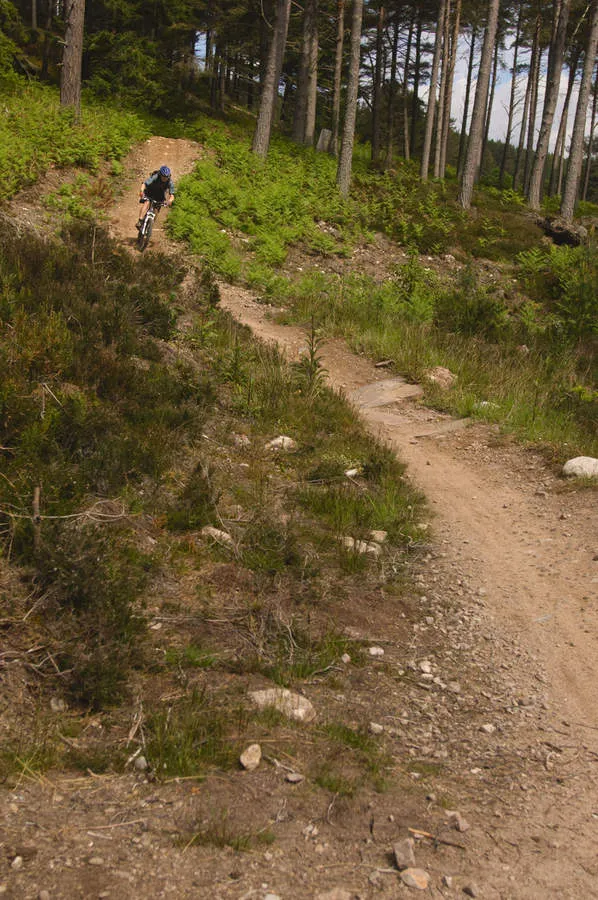
Step 2. Look ahead as far as possible at where you want to go. This lets you choose good lines down the hill and has you spotting obstacles early.
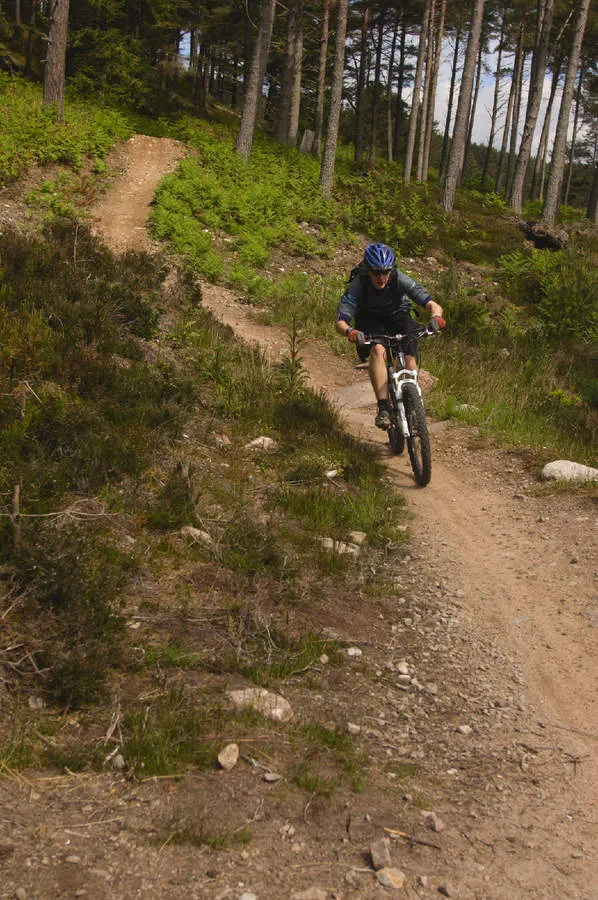
Step 3. Have a loose but positive grip on the bars (no white knuckle-style grips!), with two fingers covering the brakes and your arms and legs slightly bent.
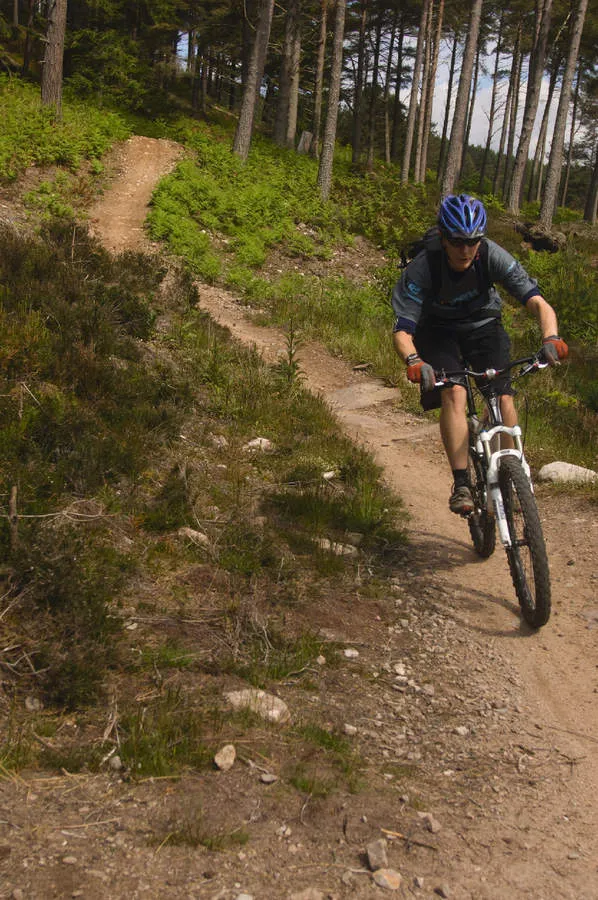
Step 4. Concentrate on choosing smooth lines and braking in appropriate places – pedalling can come later (lots of riders are guilty of focusing on pedalling in preference to good line choice and/or effective braking).
Finally, always remember: Look at where you want to go, not at what you want to avoid.
- Top tips: Switch your handlebar grips to thinner versions if you have small hands and shorten the reach to the brake levers. This will reduce arm/hand pump and fatigue.
Taking it to the trails: where downhilling skills will help you in real-world riding
1] Maintain your momentum

This section illustrates the kind of high-speed swoopy turn to rock feature/drop-off that trails dish out in abundance. First-class technique and control are essential, but when it comes together there is no better feeling as you ping out of the drop-off with your speed fully intact.
- Top tips: Always be aware of your momentum. If you feel you have insufficient momentum — as in this case — feel free to give the cranks a quick stomp before returning to the ‘attack’ position. A quarter-turn on the cranks can make all the difference.
Set-up tips for tackling descents more easily

Knees are pretty fragile and any protection you can give them is good.

Lowering your saddle slightly will offer improved manoeuvrability.
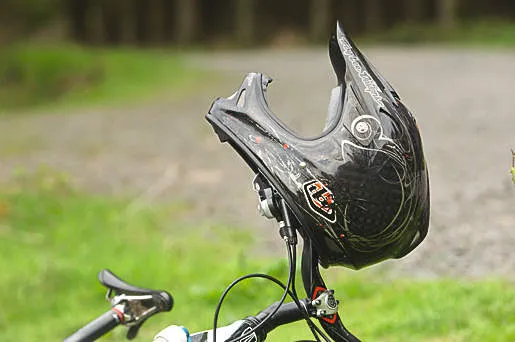
Helmets are essential if you’re downhilling. Consider using a full-face helmet.

Ensure brakes are functioning properly before you set off.

Correctly adjusted suspension will help maintain tyre/ground contact and enhance control through traction. Ensure your lockout levers are flipped off.

Adjust your tyre pressures according to the terrain and season. The pressure in the front should be slightly lower than in the rear.
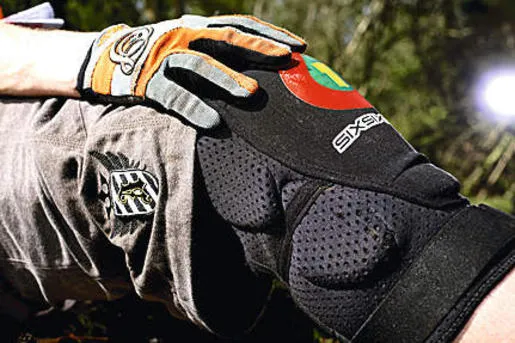
Gloves, like body armour, are an absolute must when downhilling.
Confidence is key to tackling downhills
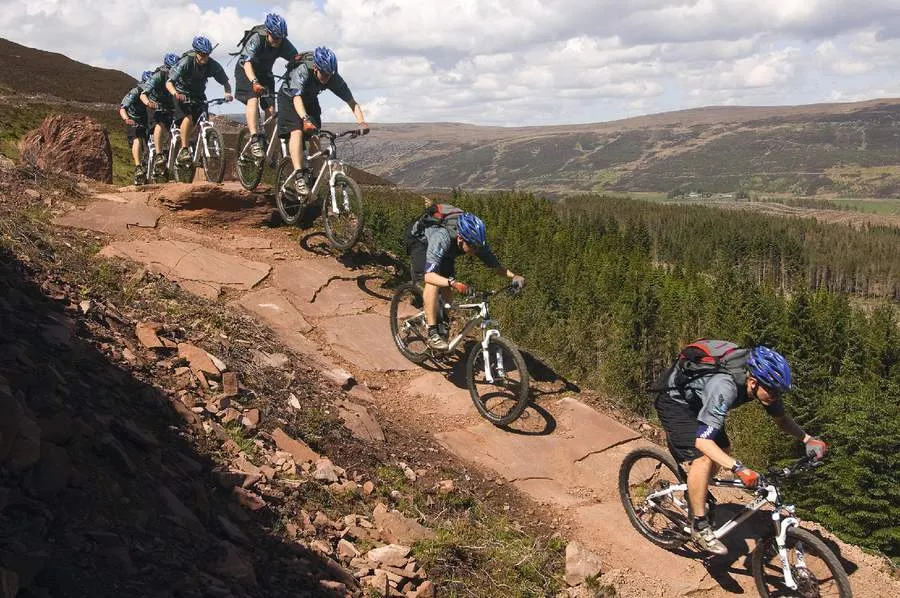
This is a high-speed section, beautifully exposed on the left side with views out to the ocean. The trail cuts a swoopy contour, pausing only to spit riders off unsighted drop-off and jumps. In other words, plenty of distractions and opportunities to come seriously unstuck.
Below is a rider’s eye view of the initial drop-off.
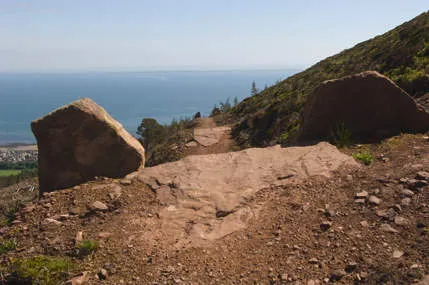
Supreme confidence borne out of good technique is essential here, as is an ability to read the trail to ascertain clues as to the scale, direction, and difficulty of the drop.
- Top tips: Hitting something completely blind is the province of the experienced rider — and the foolhardy! There’s no shame in stopping to check your line. Also give yourself a substantial run-in to allow you to get composed — think at least 15-20 bike lengths.
Time to get out and get dirty
Go on then, get out on your local trail and put some of these tips and techniques to work. Remember to start slowly and put it all together, rather than throwing yourself down the first big descent you encounter. Even professional, sponsored downhillers have admitted to walking a downhill course to thoroughly sight it before rolling through it the first time.
